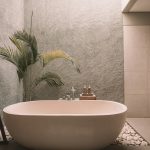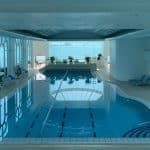Upgrading the plumbing system in a period property like an Edwardian home can be a momentous project. It’s not just about replacing old pipes and fixtures. There’s a lot more to consider, from the historic value of the house to the building regulations and the budget. In this article, we will delve into the key considerations that you need to be cognizant of when planning your plumbing upgrade project.
Familiarize Yourself with the Building’s History and Structure
Before embarking on your project, it’s crucial to have a solid understanding of the house’s history and structural design. Edwardian homes, constructed between 1901 and 1910, feature unique architectural details that need to be preserved. Understanding the layout and structural integrity of the house can help you plan your plumbing renovation effectively without disrupting the home’s historic charm.
A découvrir également : How to design an energy-efficient lighting plan for a large garden in rural Nottinghamshire?
The structural consideration also includes the type of materials used in the existing plumbing system. Lead pipes were common in Edwardian homes, and these would need to be replaced to meet current health and safety standards. Familiarizing yourself with the house’s structure will give you a comprehensive idea about the costs, timeframe, and potential challenges involved in the project.
Evaluate the Space and Design Requirements
Space and design are crucial elements to consider in your plumbing upgrade project. This involves evaluating the available space for installing new pipes and fixtures, specifically if you are planning an extension or conversion. It’s also essential to take into account the design preferences. For instance, you might want to replicate the Victorian style in the bathroom fixtures or choose a more contemporary look.
A voir aussi : How to ensure proper ventilation in a refurbished loft conversion in Edinburgh?
A common issue in old homes like Edwardian properties is insufficient space. This might mean that you have to undertake additional work such as moving walls or installing cladding to conceal plumbing installations. These steps will add to the project’s overall costs.
Choose the Best Materials and Appliances
Choosing the right materials and appliances can significantly impact the longevity, functionality, and aesthetics of your plumbing system. When you are working on an Edwardian home, it’s important to strike the right balance between modern functionality and period aesthetics.
For instance, you might choose copper pipes for their durability, corrosion resistance, and the old-world charm they lend. As for appliances, you might want to install high-efficiency options that help conserve water and energy, like dual-flush toilets or low-flow showerheads. However, make sure these match the style and decor of the house.
Understand the Passivhaus Principles
If you wish to upgrade your Edwardian home to a Passivhaus standard, it involves rigorous energy performance standards that drastically reduce the home’s ecological footprint. It’s a voluntary standard for energy efficiency, which can result in a dramatic reduction in energy consumption while providing superior comfort and air quality.
Incorporating Passivhaus principles in your renovation project could mean installing high-performance windows and doors, creating airtight building envelopes, or incorporating ventilation systems with heat recovery. While the upfront costs may be higher, the long-term savings on energy bills and the added comfort make it a worthwhile consideration.
Estimate the Costs and Secure Permits
Without a doubt, the cost is a significant factor in any renovation project. The cost of upgrading the plumbing in an Edwardian home can vary greatly depending on the size of the house, the extent of the renovation, the materials used, and whether you are including energy-efficient upgrades like the Passivhaus standard.
Once you’ve estimated the costs, it’s time to secure necessary permits. Any significant renovation in a period property, especially a listed building, will require planning permission and building regulation approval. Therefore, it’s essential to factor in the time and cost involved in securing these permissions when planning your project.
Remember, upgrading the plumbing system in your Edwardian home can be a challenging yet rewarding project. It’s about preserving the past while equipping the home for future needs. With careful planning and consideration of the points we’ve discussed, you can ensure your home renovation project is a successful one.
Maintain the Historic Integrity and Aesthetics
Preserving the historical charm of a period house like an Edwardian home is often as important as making it habitable and efficient. Therefore, when you plan to upgrade the plumbing, consider how your actions will affect the home’s original features and aesthetics.
In Edwardian homes, for example, the bathrooms were often fitted with cast iron bathtubs, high-level cistern toilets, and pedestal sinks. If you want to retain these vintage features, you will need to plan your plumbing accordingly. Similarly, if the house has original tiling or wooden flooring that you want to preserve, you need to consider the impact of your plumbing work on these elements.
Moreover, the use of appropriate cladding materials is crucial for concealing new pipes without disrupting the period aesthetics. You may want to use materials that match the existing decor of the house, or choose a design installation that seamlessly blends into the home’s architecture. Your guide cladding choice will have a significant impact on the overall look and feel of the renovated space.
Also, remember that some Edwardian features may not be in line with modern building regulations. For instance, the use of lead pipes, once common in Edwardian homes, is no longer permissible due to health risks. In such cases, you have to find ways to replace these fixtures without compromising the home’s historical integrity.
Implementing Passivhaus Standards
More homeowners are now looking to incorporate energy-efficient features into their homes. When upgrading the plumbing systems of an Edwardian house, you could consider integrating Passivhaus builds into your renovation plan. The best Passivhaus projects drastically reduce energy consumption while enhancing comfort and air quality.
When you build house plumbing systems according to Passivhaus standards, you are not only creating a more sustainable home but also adding value to your property. You could consider installing energy-efficient appliances, ensuring an airtight building envelope, and incorporating ventilation systems with heat recovery.
However, transforming period homes into Passivhaus homes is not a straightforward task. It requires a comprehensive understanding of the Passivhaus principles and a careful balance between preserving the old and integrating the new. Hence, it’s advisable to consult professionals experienced in inspiring Passivhaus renovations.
Conclusion
Upgrading the plumbing system in an Edwardian home is a complex task that requires careful planning and execution. Ensuring structural integrity, preserving historical charm, choosing the right materials, and implementing energy-efficient measures are all crucial aspects of this home project.
While considering extensions adding space and design, it is essential to respect the house’s original aesthetics. Whether it’s the choice of bathroom fixtures or the use of cladding materials, every detail matters.
Finally, adhering to Passivhaus standards can significantly enhance the value of the house, making it an appealing option for homeowners. Therefore, reading conversions articles, seeking professional advice and following a complete guide to plumbing renovations can be truly beneficial.
In the end, the success of your renovation project lies in striking the right balance between preserving the historical character of the house and meeting modern living standards. After all, the homes best serve their owners when they flawlessly blend past charm with present comforts and future needs.










